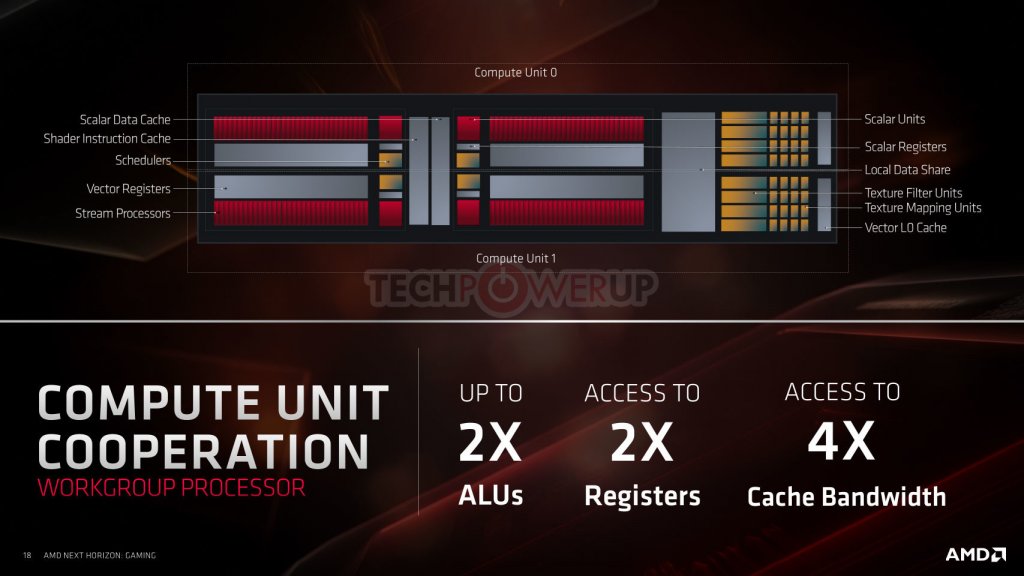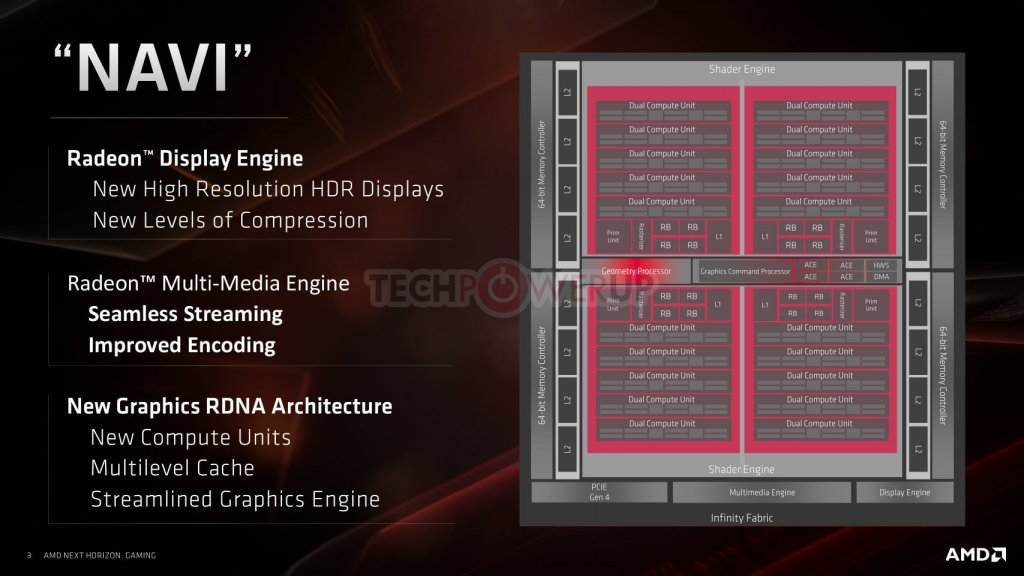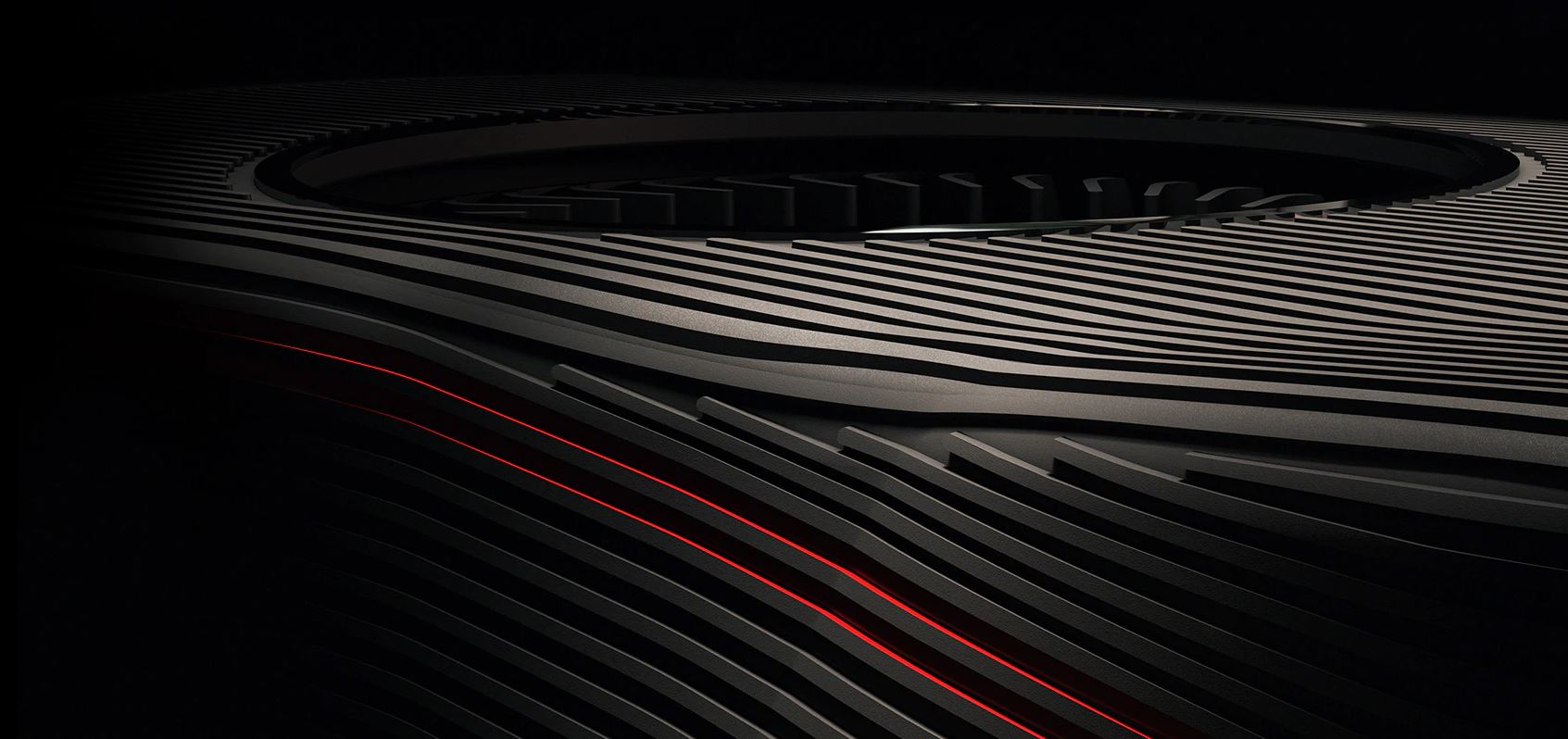
When you read about AMD’s new graphics cards, or if you had at any point throughout the year, there’s a pretty good chance you’re familiar with the term “Navi.”
It’s been thrown around a lot. At first, it was the codename for the new line of graphics cards themselves. And then it became the codename for those cards’ architecture. Now, it’s actually not a thing at all. After the official announcement for the cards at E3 2019, AMD did away with the codename and revealed the official name of the new architecture: RDNA.
So instead, let’s take a look at RDNA, the official name for Navi architecture.
RDNA Architecture
A processor’s architecture, to explain it as simply as possible, is just its physical layout. Compute units, memory controllers, shader engines—the architecture contains it all, and much more, and maps it all out on the GPU. Here’s a look at the latest AMD graphics card architecture, for your viewing pleasure.
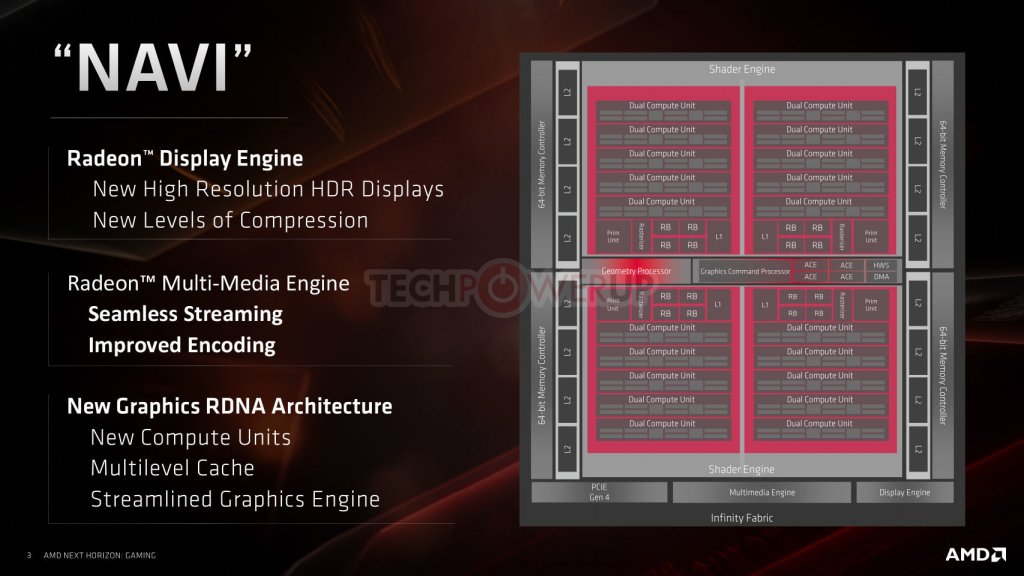
AMD’s RDNA architecture promises a load of improvements from previous models, such as better high resolution HDR displays, new levels of compression, more/new compute units, and improved encoding using the Radeon Multimedia Engine. Those are just a few improvements and innovations that AMD has promised, and it’s all baked within RDNA.
Using multilevel cache hierarchy, RDNA also promises to lower latency, increase bandwidth, and lower power consumption. All around, AMD’s new architecture is more efficient than anything AMD has done in the past. And, according to AMD, it’s even more efficient than Nvidia’s graphics architecture. We won’t know how true that is until we put it to the test on release, but that’s what AMD claims, at least.
AMD has been making graphical architectures since the 90s, starting with the R100. If you were to break down each time period, this is what AMD calls its “fifth era” of GPU architecture, immediately following the Radeon 7000 architecture, codenamed Southern Islands, that ran six years from 2012 to 2018.
How RDNA is better than its predecessor
All of that’s fine and good, but how exactly is this an improvement on the fourth-era architecture in the Radeon 7000 series? Well, as I’m sure you imagined, it’s better in a lot of ways, and those improvements were made in the GPU’s core design.
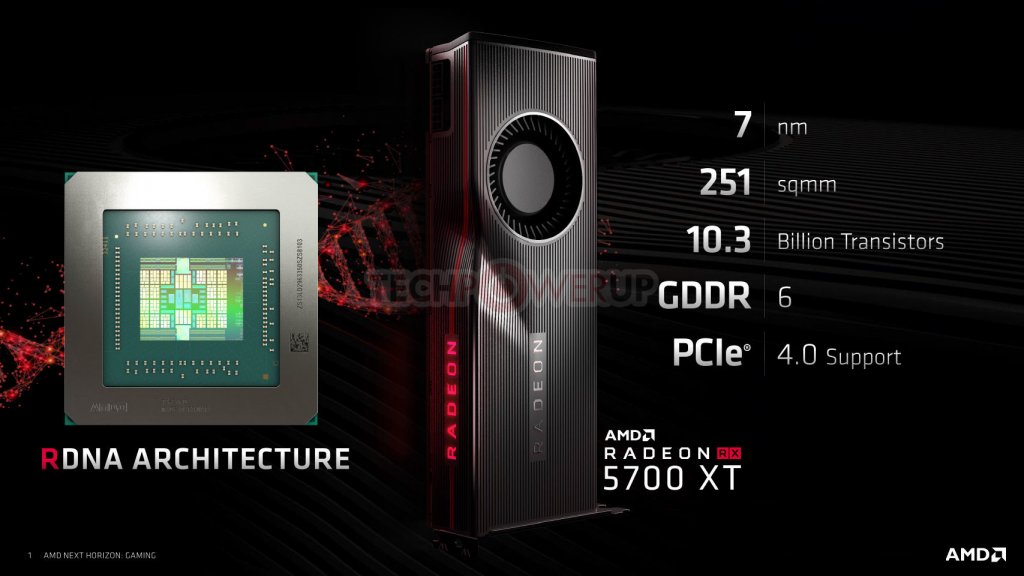
Improvements made in RDNA can be broken down into three main categories: Redesigned compute units, the improved multi-level cache hierarchy, and its streamlined graphics pipeline, which allows for better performance at higher clock frequencies.
RDNA’s compute units, contain 80 scalar processors, 2,560 stream processors, and 160 64b bilinear filter units. The multilevel cache now supports a 2x V$LO load bandwidth, and the streamlined graphics engine now has a 4-prim shader out, 8-prim shader in geometry engine, 64 pixel units, 4 asynchronous compute engines, and finely balanced work distribution and redistribution.
To break down all that technical jargon, those graphics engine improvements are what allows the GPU to run those high clock frequencies without consuming a ton of power. That’s a welcome improvement to a GPU family known for chugging a bit more juice than the competition.
Without spewing more extremely technical terms, it’s best to read through AMD’s official deck slides on each feature if you’d like to learn more about the processes behind the new architecture, which we’ve included below.





